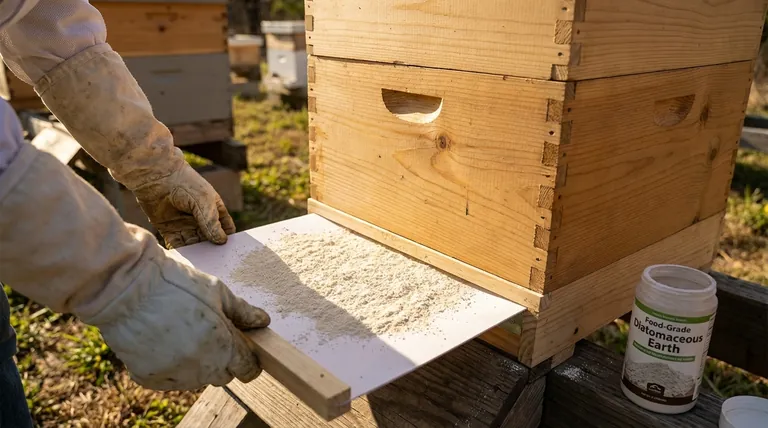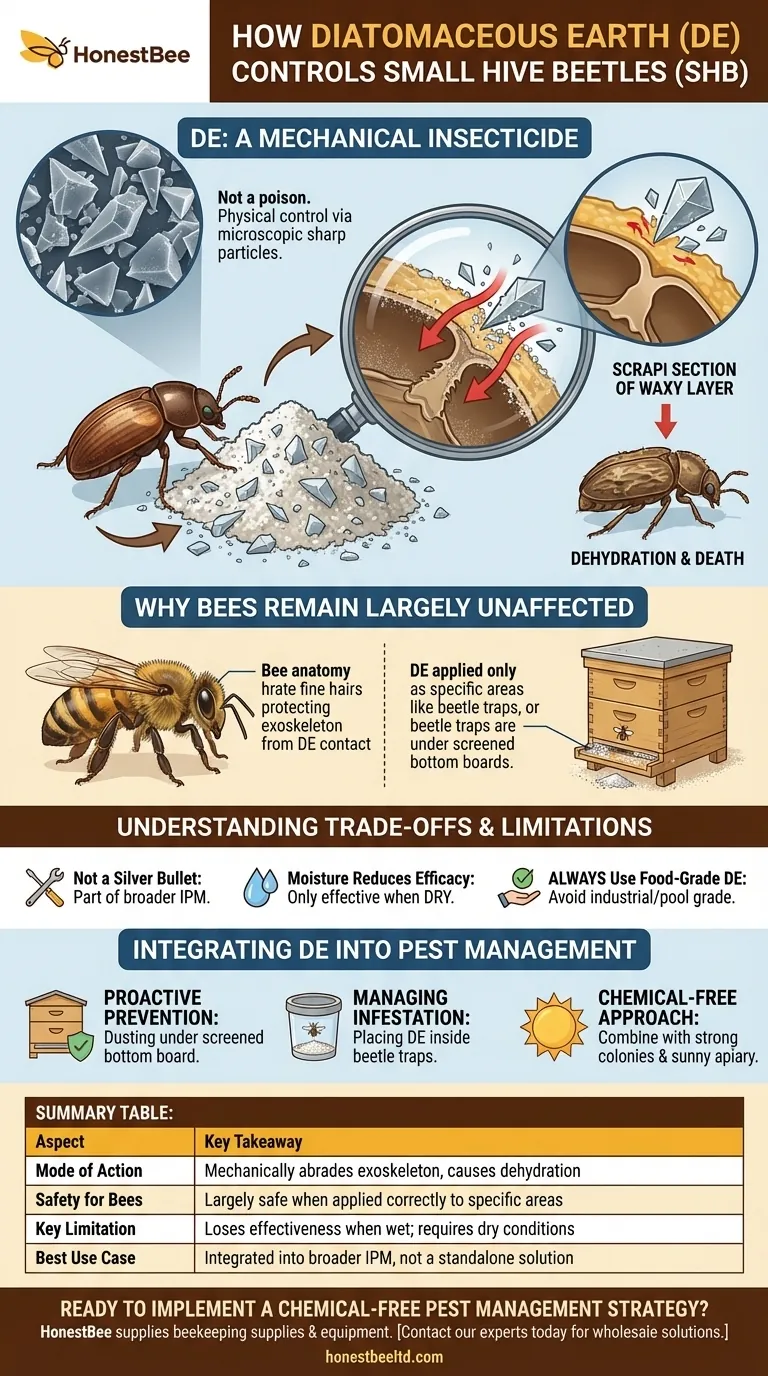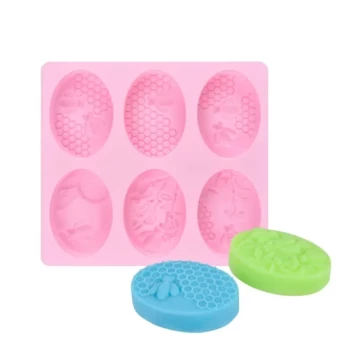In short, diatomaceous earth (DE) acts as a mechanical insecticide against Small Hive Beetles (SHB). It is not a poison but a physical control method that consists of microscopic, sharp-edged particles. These particles abrade the beetle's waxy exoskeleton, causing them to dehydrate and die, while remaining largely harmless to the honeybees when applied correctly.
The core principle is simple: Diatomaceous earth offers a chemical-free way to manage hive beetles by physically compromising their protective outer layer. Its effectiveness hinges entirely on proper, strategic application to target the pest without harming the colony.

How Diatomaceous Earth Works: A Mechanical Approach
The Microscopic Weapon
Diatomaceous earth is a powder made from the fossilized remains of tiny aquatic organisms called diatoms. Under a microscope, these particles resemble shards of glass.
It's this unique physical structure, not a chemical composition, that makes it an effective insecticide.
Abrasive Action on Exoskeletons
Small Hive Beetles, like many insects, are covered in a waxy outer layer called an exoskeleton. This layer is critical for retaining moisture.
When a beetle crawls through DE, the sharp particles scrape away this protective waxy coating.
Dehydration, Not Poison
With its exoskeleton compromised, the beetle can no longer retain water. It quickly dehydrates and dies.
This process is entirely mechanical, which is why it's a popular choice for beekeepers seeking to avoid chemical treatments in their hives.
Why Bees Remain Largely Unaffected
The Role of Bee Anatomy
Honeybees have a more robust and flexible exoskeleton than SHB. More importantly, their bodies are covered in fine hairs.
These hairs help prevent the DE particles from making direct, abrasive contact with the sensitive joints of their exoskeleton, offering a degree of natural protection.
Strategic Application is Key
The primary reason DE is safe for bees is its method of application. Beekeepers do not dust the entire hive or the bees themselves.
Instead, DE is applied only in specific areas where beetles congregate but where bees have limited traffic, such as in beetle traps, under screened bottom boards, or in the corners of the hive body.
Understanding the Trade-offs and Limitations
It is Not a Silver Bullet
DE is a valuable tool for reducing beetle populations, but it is not an instant solution for a severe infestation.
It works best as one component of a broader Integrated Pest Management (IPM) strategy that includes maintaining strong, populous colonies and using physical traps.
Moisture Reduces Efficacy
Diatomaceous earth is only effective when it is dry.
If it becomes wet or caked with hive moisture, its sharp edges are rendered harmless. This means it may need to be reapplied periodically, especially in humid climates.
Always Use Food-Grade DE
It is critical to use only food-grade diatomaceous earth. Industrial or pool-grade DE contains added chemicals and has been treated in a way that can be toxic and harmful to your bees.
Integrating DE into Your Pest Management Strategy
To use diatomaceous earth effectively, align the application method with your specific goal.
- If your primary focus is proactive prevention: Use a light dusting of DE on a solid bottom board or in a tray under a screened bottom board to create a barrier for beetles attempting to pupate in the soil below.
- If your primary focus is managing a low-level infestation: Place DE inside commercially available or homemade beetle traps, which lure the beetles in but keep the DE contained and away from the bees.
- If your primary focus is a chemical-free approach: Combine DE with other physical controls, such as maintaining strong colonies that can police the beetles themselves and ensuring the apiary is in a sunny, dry location.
Ultimately, using diatomaceous earth empowers you to physically control pests without introducing chemicals to your hive.
Summary Table:
| Aspect | Key Takeaway |
|---|---|
| Mode of Action | Mechanically abrades the beetle's waxy exoskeleton, causing dehydration. |
| Safety for Bees | Largely safe when applied correctly to specific areas, due to bees' protective hairs. |
| Key Limitation | Loses effectiveness when wet; requires dry conditions and reapplication. |
| Best Use Case | Integrated into a broader pest management strategy, not a standalone solution for severe infestations. |
Ready to implement a chemical-free pest management strategy?
HONESTBEE supplies beekeeping supplies and equipment to commercial apiaries and beekeeping equipment distributors. We can provide you with the right tools, including beetle traps and food-grade diatomaceous earth, to protect your hives effectively.
Contact our experts today to discuss wholesale solutions for a healthier, more productive apiary.
Visual Guide

Related Products
- Australian Pine Wood Langstroth Screen Bottom Board for Wholesale
- Adjustable Formic and Acetic Acid Dispenser for Bee Mite Treatment
- Easy Use Manual Stainless Steel Honey Press for Honey Comb
- Stainless Steel 3 Frame Manual Honey Extractor Spinner for Bee Honey Extraction
- 2 Frame Stainless Steel Manual Honey Spinner Extractor for Beekeeping
People Also Ask
- What are the assembly options for the Cypress Screened Bottom Board? Ready-to-Use for Immediate Hive Health
- What are the pros and cons of a screened bottom board? Optimize Hive Health for Your Climate
- How does a screened bottom board benefit the hive during the summer? Boost Ventilation & Pest Control
- What features does the screened bottom board with insert offer? Essential Tools for Hive Health and Pest Control
- How should the screened bottom board be used throughout the year? A Guide for Healthy Hives



















